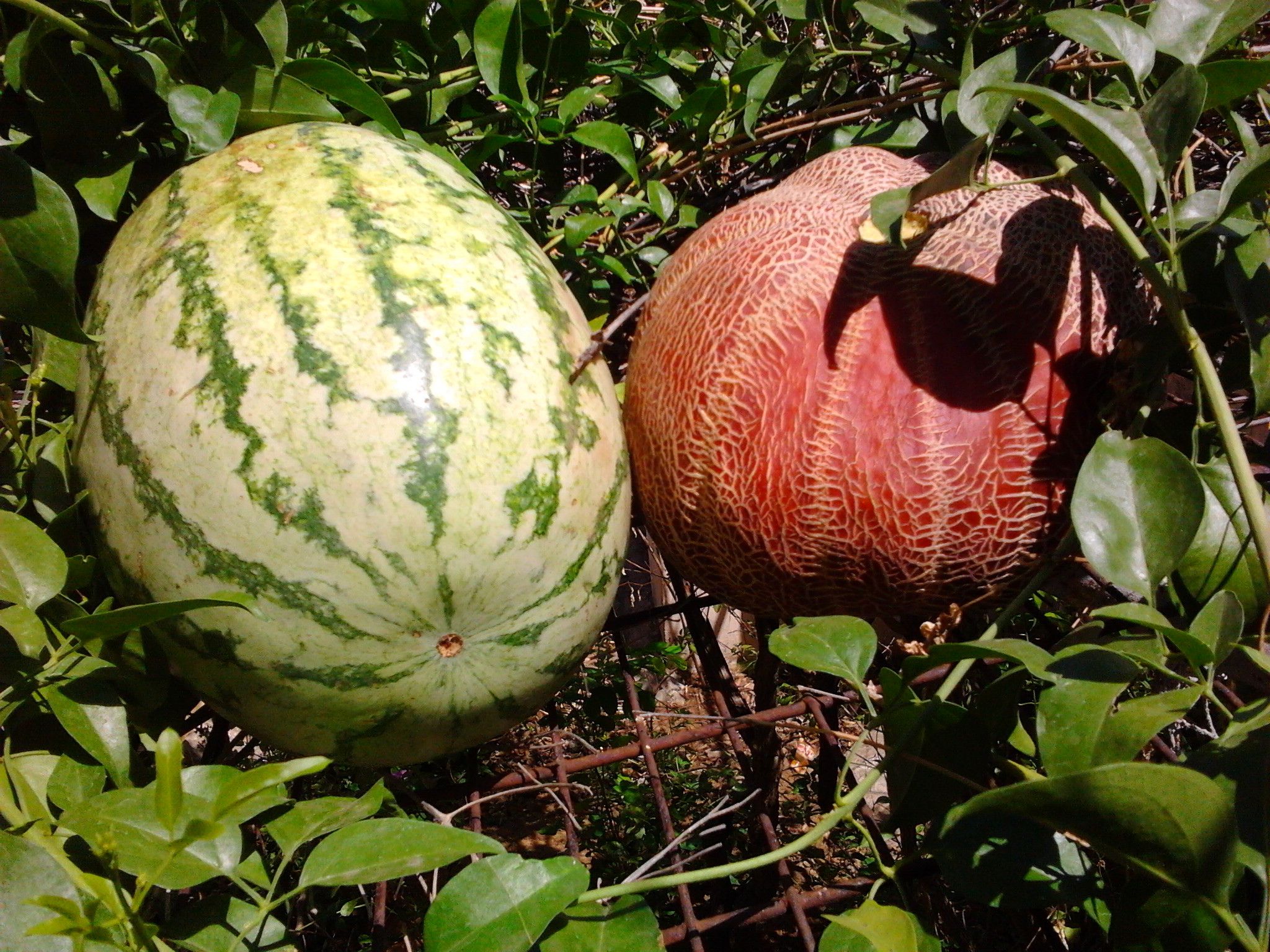|
Cucurbitaceae
The Cucurbitaceae (), also called cucurbits or the gourd family, are a plant family (biology), family consisting of about 965 species in 101 genera.Cucurbitaceae Juss. ''Plants of the World Online''. Retrieved 10 June 2024. Those of most agricultural, commercial or nutritional value to humans include: *''Cucurbita'' – Squash (plant), squash, pumpkin, zucchini (courgette), some gourds. *''Lagenaria'' – calabash (bottle gourd) and other, ornamental gourds. *''Citrullus'' – watermelon (''C. lanatus'', ''C. colocynthis''), plus several other species. *''Cucumis'' – cucumber (''C. sativus''); various melons and vines. *''Momordica'' – Momordica charantia, bitter melon. *''Luffa'' – commonly called 'luffa' or ‘luffa squash'; sometimes spelled loofah. Young fruits may be cooked; when fully ripened, the ... [...More Info...] [...Related Items...] OR: [Wikipedia] [Google] [Baidu] |
Zucchini
Zucchini (; : ''zucchini'' or ''zucchinis''), courgette () or ''Cucurbita pepo'' is a summer squash, a Vine, vining herbaceous plant whose fruit are harvested when their immature seeds and Fruit anatomy#Epicarp, epicarp (rind) are still soft and edible. It is closely related, but not identical, to the Marrow (vegetable), marrow; its fruit may be called ''marrow'' when mature. Ordinary zucchini fruit are any shade of green, though the golden zucchini is a deep yellow or orange. At maturity, they can grow to nearly in length, but they are normally harvested at about . In botany, the zucchini's fruit is a Berry (botany)#Modified berries, pepo, a Berry (botany), berry (the swollen ovary (botany), ovary of the squash blossom, zucchini flower) with a hardened epicarp. In cookery, it is treated as a vegetable, usually cooked and eaten as an accompaniment or savory dish, though occasionally used in sweeter cooking. Zucchini occasionally contain toxic cucurbitacins, making them extre ... [...More Info...] [...Related Items...] OR: [Wikipedia] [Google] [Baidu] |
Luffa
''Luffa'' is a genus of tropical and subtropical vines in the pumpkin, squash and gourd family (Cucurbitaceae). In everyday non-technical usage, the luffa, also spelled loofah or less frequently loofa, usually refers to the fruits of the species '' Luffa aegyptiaca'' and '' Luffa acutangula''. It is cultivated and eaten as a vegetable, but must be harvested at a young stage of development to be edible. The vegetable is popular in India, China, Nepal, Bhutan, Bangladesh and Vietnam. When the fruit fully ripens, it becomes too fibrous for eating. The fully developed fruit is the source of the loofah scrubbing sponge. Names The name ''luffa'' was taken by European botanists in the 17th century from the Arabic name ''lūf''.The plant name "luffa" was introduced to Western botany nomenclature by the botanist Johann Vesling (died 1649), who visited Egypt in the late–1620s and described the plant under cultivation with artificial irrigation in Egypt. In 1706 the botanist Joseph P ... [...More Info...] [...Related Items...] OR: [Wikipedia] [Google] [Baidu] |
Gourd
Gourds include the fruits of some flowering plant species in the family Cucurbitaceae, particularly '' Cucurbita'' and '' Lagenaria''. The term refers to a number of species and subspecies, many with hard shells, and some without. Many gourds have large, bulbous bodies and long necks, such as Dipper Gourds, many variations of Bottle Gourd and caveman club gourds. One of the earliest domesticated types of plants, subspecies of the bottle gourd, '' Lagenaria siceraria'', have been discovered in archaeological sites dating from as early as 13,000 BC. Gourds have had numerous uses throughout history, including as tools, musical instruments, objects of art, film, and food. Terminology ''Gourd'' is occasionally used to describe crop plants in the family Cucurbitaceae, like pumpkins, cucumbers, squash, luffa, and melons. More specifically, ''gourd'' refers to the fruits of plants in the two Cucurbitaceae genera '' Lagenaria'' and '' Cucurbita'', or also to their hollow, dried-ou ... [...More Info...] [...Related Items...] OR: [Wikipedia] [Google] [Baidu] |
Gerrardanthus
''Gerrardanthus'' is a genus of flowering plants native to tropical Africa and South Africa, first described by William Henry Harvey (1811–1866), and named in honor of William Tyrer Gerrard (died 1866 in Mahavelona, Madagascar), botanical collector in Natal and Madagascar Madagascar, officially the Republic of Madagascar, is an island country that includes the island of Madagascar and numerous smaller peripheral islands. Lying off the southeastern coast of Africa, it is the world's List of islands by area, f ... in the 1860s. ''Gerrardanthus'' is a perennial climber, with height up to 5 m, rising from a swollen, tuberous base with a thickness of up to 1.5 m. Stems are herbaceous but becoming woody and grey-barked as they age. Species * '' Gerrardanthus aethiopicus'' * '' Gerrardanthus grandiflorus'' * '' Gerrardanthus lobatus'' * '' Gerrardanthus macrorhizus'' * '' Gerrardanthus nigericus'' * '' Gerrardanthus paniculatus'' * '' Gerrardanthus parviflorus'' * '' Ge ... [...More Info...] [...Related Items...] OR: [Wikipedia] [Google] [Baidu] |
Cyclanthera Pedata
''Cyclanthera pedata'', known as ''caigua'', is a herbaceous vine grown for its edible fruit, which is predominantly used as a vegetable. It is known from cultivation only, and its use goes back many centuries as evidenced by ancient phytomorphic ceramics from Peru depicting the fruits. Origin and distribution ''Cyclanthera pedata'', presumably native to the Andes, was first domesticated in the mountainous regions of Peru. It then spread to Southeast Asia and Africa. In Africa, it is only cultivated in the highlands of East Africa.'' Biology ''C. pedata'' is an annual climbing plant with vines that can reach up to 4.5 meters in height. It has a thin stem and palmate leaves that are 10-12 cm wide. The small, unisexual flowers range from white to light green and are located at the leaf axils. The light green fruits are ovoid, curved, and can grow up to 20 cm in length. Description ''Cyclanthera pedata'' is a vine that can be 12 m long; the stems are thin; and the leaves can be ... [...More Info...] [...Related Items...] OR: [Wikipedia] [Google] [Baidu] |
Cyclanthera
''Cyclanthera'' is a genus of flowering plants in the family Cucurbitaceae. The name comes from the fact that some species show extreme cases of stamen The stamen (: stamina or stamens) is a part consisting of the male reproductive organs of a flower. Collectively, the stamens form the androecium., p. 10 Morphology and terminology A stamen typically consists of a stalk called the filament ... fusion forming a ring around the gynoecium, with a single locule. References * Schaefer, H. & Renner, S.S. (2011) Phylogenetic relationships in the order Cucurbitales and a new classification of the gourd family (Cucurbitaceae), Taxon, 60 (1): 122–138. * Kearns, D.M. & Jones, E. (1992) A re-evaluation of the genus Cremastopus (Cucurbitaceae). Madroño 39: 301-303. * Lira Saade, R. (1995) Estudios taxonómicos y ecogeográficos de las Cucurbitaceae latinoamericanas de importancia económica. Rome: IPGRI. External links * * {{Taxonbar, from=Q143381 Cucurbitaceae genera [...More Info...] [...Related Items...] OR: [Wikipedia] [Google] [Baidu] |
Momordica Charantia
''Momordica charantia'' (commonly called bitter melon, cerassee, goya, bitter apple, bitter gourd, bitter squash, balsam-pear, karela, karavila and many more names listed below) is a tropical and subtropical vine of the family Cucurbitaceae, widely grown in Asia, Africa, and the Caribbean for its edible fruit. Its many varieties differ substantially in the shape and bitterness of the fruit. Bitter melon originated in Africa, where it was a dry-season staple food of ǃKung hunter-gatherers. Wild or semi-domesticated variants spread across Asia in prehistory, and it was likely fully domesticated in Southeast Asia. It is widely used in the cuisines of East Asia, South Asia, and Southeast Asia. Description This herbaceous, tendril-bearing vine grows up to in length. It bears simple, alternate leaves across, with three to seven deeply separated lobes. Each plant bears separate yellow male and female flowers. In the Northern Hemisphere, flowering occurs from June to July, a ... [...More Info...] [...Related Items...] OR: [Wikipedia] [Google] [Baidu] |
Momordica
''Momordica'' is a genus of about 60 species of annual or perennial climbers herbaceous or rarely small shrubs belonging to the family Cucurbitaceae, natives of tropical and subtropical Africa and Asia and Australia. Most species produce floral oils and are visited by specialist pollinators in the apid tribe Ctenoplectrini. A molecular phylogeny that includes all species is available (Schaefer and Renner, 2010). Cultivation and uses Some ''Momordica'' species are grown in cultivation for their fleshy fruit, which are oblong to cylindrical in shape, orange to red in colour, prickly or warted externally, and in some species burst when ripe, generally with elastic force, into irregular valves. ''Momordica'' can be cultivated in 5 litre vases or jardinière and is hardly susceptible to plagues. After seeding, ''Momordica'' develops leaves in about 11 days and flowers after 40 to 50 days. After fertilisation, the ''Momordica'' fruit will be developed in about 10 days. A species of ... [...More Info...] [...Related Items...] OR: [Wikipedia] [Google] [Baidu] |
Melon
A melon is any of various plants of the family Cucurbitaceae with sweet, edible, and fleshy fruit. It can also specifically refer to ''Cucumis melo'', commonly known as the "true melon" or simply "melon". The term "melon" can apply to both the plant and its fruit. Botanically, a melon is a kind of berry, specifically a " pepo". The word ''melon'' derives from Latin ', which is the latinization of the Greek (''mēlopepōn''), meaning "melon",. itself a compound of (''mēlon''), "apple", treefruit (''of any kind'')" and (''pepōn''), amongst others "a kind of gourd or melon". Many different cultivars have been produced, particularly of the true melon, such as the cantaloupe and honeydew. History Melons were thought to have originated in Africa. However, recent studies suggest a Southwest Asian origin, especially Iran and India; from there, they gradually began to appear in Europe toward the end of the Western Roman Empire. Melons are known to have been grown by the ancient E ... [...More Info...] [...Related Items...] OR: [Wikipedia] [Google] [Baidu] |
Cucumber
The cucumber (''Cucumis sativus'') is a widely-cultivated creeping vine plant in the family Cucurbitaceae that bears cylindrical to spherical fruits, which are used as culinary vegetables.Cucumber " ''''. 9982019. Considered an annual plant, there are three main types of cucumber—slicing, pickling, and seedless—within which several |
Cucumis
__NOTOC__ ''Cucumis'' is a genus of vine, twining, tendril-bearing plants in the Family (biology), family Cucurbitaceae which includes the cucumber (''Cucumis sativus''), true melons (''Cucumis melo'', including cantaloupe and Honeydew (melon), honeydew), the horned melon (''Cucumis metuliferus''), and the West Indian gherkin (''Cucumis anguria''). 30 species occur in Africa, and 25 occur in India, Southeast Asia, and Australia. However, ''Cucumis myriocarpus'' was introduced to Australia from Sub-Saharan Africa, and is regarded as an invasive species. Species , Plants of the World Online accepted 61 species: *''Cucumis aculeatus'' Cogn. *''Cucumis aetheocarpus'' (C.Jeffrey) Ghebret. & Thulin *''Cucumis africanus'' L.f. *''Cucumis althaeoides'' (Ser.) P.Sebastian & I.Telford *''Cucumis anguria'' L. *''Cucumis argenteus'' (Domin) P.Sebastian & I.Telford *''Cucumis asper'' Cogn. *''Cucumis baladensis'' Thulin *''Cucumis bryoniifolius'' (Merxm.) Ghebret. & Thulin *''Cucumis canox ... [...More Info...] [...Related Items...] OR: [Wikipedia] [Google] [Baidu] |
Watermelon
The watermelon (''Citrullus lanatus'') is a species of flowering plant in the family Cucurbitaceae, that has a large, edible fruit. It is a Glossary of botanical terms#scandent, scrambling and trailing vine-like plant, and is plant breeding, widely cultivated worldwide, with more than 1,000 variety (botany), varieties. Watermelons are grown in favorable climates from tropics, tropical to temperate climate, temperate regions worldwide for its large edible fruit, which is a Berry (botany), berry with a hard rind and no internal divisions, and is botany, botanically called a Glossary of botanical terms#pepo, ''pepo''. The sweet, juicy flesh is usually deep red to pink, with many black seeds, although seedless fruit, seedless varieties exist. The fruit can be eaten raw or pickled, and the rind is edible after cooking. It may also be consumed as a juice or an ingredient in mixed beverages. Kordofan melons from Sudan are the closest relatives and may be progenitors of modern, cul ... [...More Info...] [...Related Items...] OR: [Wikipedia] [Google] [Baidu] |







